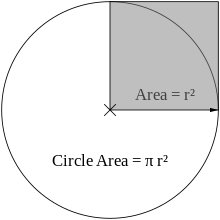Definition of a Polygon
A polygon is any 2-dimensional shape formed with straight lines. Triangles, quadrilaterals, pentagons, and hexagons are all examples of polygons. The name tells you how many sides the shape has. For example, a triangle has three sides, and a quadrilateral has four sides. So, any shape that can be drawn by connecting three straight lines is called a triangle, and any shape that can be drawn by connecting four straight lines is called a quadrilateral.
Polygons
 |
All of these shapes are polygons. Notice how all the shapes are drawn with only straight lines? This is what makes a polygon. If the shape had curves or didn't fully connect, then it can't be called a polygon. The orange shape is still a polygon even if it looks like it has an arrow. All the sides are straight, and they all connect. The orange shape has 11 sides.
I've mentioned a few polygons and have shown you a few common shapes. Here is a list of those in addition to several more:
| Shape | # of Sides |
|---|
| Triangle | 3 |
| Square | 4 |
| Rectangle | 4 |
| Quadrilateral | 4 |
| Pentagon | 5 |
| Hexagon | 6 |
| Heptagon | 7 |
| Octagon | 8 |
| Nonagon | 9 |
| Decagon | 10 |
| n-gon | n sides |
The last entry includes the general term for a polygon with n number of sides. Polygons aren't limited to the common ones we know but can get pretty complex and have as many sides as are needed. They can have 4 sides, 44 sides, or even 444 sides. The names would be 4-gon, or quadrilateral, 44-gon, and 444-gon, respectively. An 11-sided shape can be called an 11-gon.
Regular Polygons
A special class of polygon exists; it happens for polygons whose sides are all the same length and whose angles are all the same. When this happens, the polygons are called regular polygons. A stop sign is an example of a regular polygon with eight sides. All the sides are the same and no matter how you lay it down, it will look the same. You wouldn't be able to tell which way was up because all the sides are the same and all the angles are the same.
When a triangle has all the sides and angles the same, we know it as an equilateral triangle, or a regular triangle. A quadrilateral with all sides and angles the same is known as a square, or regular quadrilateral. A pentagon with all sides and angles the same is called a regular pentagon. An n-gon with sides and angles the same is called a regular n-gon.
Regular polygons
 |
Here is a regular triangle, a regular quadrilateral, and a regular pentagon. Do you see how all the sides are the same and no matter how you flip it, it will look the same?
Angles of Regular Polygons
Regular polygons also have two different angles related to them. The first is called the exterior angle, and it is the measurement between the shape and each line segment when you stretch it out past the shape.
REFERENCE FROM https://study.com/academy/lesson/what-is-a-polygon-definition-shapes-angles.html




















